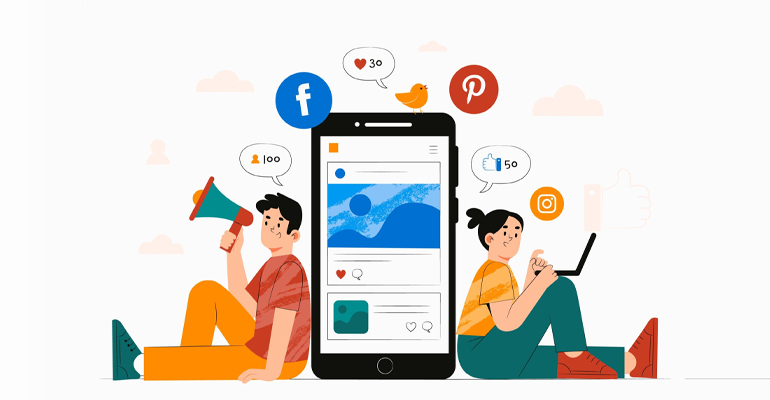Understanding the Mobile Landscape
Before diving into specific strategies, it’s crucial to grasp the mobile landscape. Consider these key points:
- Ubiquity: Mobile devices are everywhere, from smartphones to tablets.
- Constant Engagement: People spend countless hours on their phones.
- Diverse Platforms: Android, iOS, and other operating systems dominate the market.
- Visual Focus: Mobile users prefer visually appealing content.
With this understanding, you can tailor your mobile marketing for nonprofits to better engage your audience and achieve your goals.

Building a Comprehensive Mobile Marketing Strategy
A successful mobile marketing strategy involves a multi-pronged approach that leverages various channels to reach your target audience. Here are some essential components:
1. Text Messaging (SMS)
SMS remains a powerful tool for nonprofits. Use it to:
- Send urgent alerts and updates
- Share campaign information
- Request donations
- Conduct surveys
- Provide event reminders
Keep messages concise and impactful. Use clear call-to-actions to encourage engagement. SMS marketing is a direct and personal way to reach your supporters, making it a cornerstone of mobile marketing for nonprofits.
Learn more about effective SMS marketing and how it can benefit your nonprofit.
2. Email Optimization
While email is a traditional channel, optimizing it for mobile is crucial. Ensure your emails are:
- Responsive: Adapt to different screen sizes.
- Visually appealing: Use clear fonts and images.
- Concise: Get to the point quickly.
- Mobile-friendly links: Easy to click and navigate.
Mobile-optimized emails ensure that your message is accessible and engaging, which is vital for effective mobile marketing for nonprofits.
Read about mobile email optimization to improve your campaigns.
3. Leveraging Multimedia
Visual content is highly engaging on mobile devices. Incorporate:
- Videos: Share stories, testimonials, and impact reports.
- GIFs: Add humor or create animated calls to action.
- Images: Showcase your work and visually tell your story.
Multimedia content can capture attention and convey your message more effectively, enhancing your mobile marketing for nonprofits.
Discover the power of multimedia in marketing.

4. Social Media Dominance
Social media platforms are essential for mobile engagement. Focus on:
- WhatsApp: Create groups for volunteers, donors, or supporters.
- iMessage: Utilize for one-on-one communication and group chats.
- Other platforms: Explore Instagram, Facebook, X formerly Twitter, and TikTok.
Share compelling content, interact with your audience, and run mobile-specific campaigns. Social media is a powerful tool in mobile marketing for nonprofits, allowing you to reach a broad audience and foster community engagement.
Learn how to leverage social media for nonprofits.
5. Ringless Voicemail
This innovative channel delivers pre-recorded messages to recipients’ voicemail without ringing their phone. Use it for:
- Event invitations
- Campaign updates
- Donation appeals
Ensure messages are concise and professional. Ringless voicemail can be a discreet yet effective part of your mobile marketing for nonprofits, providing important updates without disrupting your supporters.
Explore the benefits of ringless voicemail.
6. Direct Mail with QR Codes
Bridge the gap between offline and online with direct mail. Include QR codes that link to:
- Donation pages
- Online surveys
- Event registration
- Video content
Track QR code scans to measure campaign effectiveness. This integration of offline and online tactics is a smart approach in mobile marketing for nonprofits, increasing engagement and tracking success.
Understand how to use QR codes in marketing.

7. Mobile-Optimized Website
A website optimized for mobile is non-negotiable. Ensure it:
- Loads quickly
- Is easy to navigate
- Displays content clearly
- Prioritizes calls to action
Your website is often the first point of contact for potential supporters, making mobile optimization a crucial aspect of mobile marketing for nonprofits.
Get tips on optimizing your website for mobile.
Key Performance Indicators (KPIs)
To measure the success of your mobile marketing efforts, track these KPIs:
- Mobile website traffic
- Open rates for SMS and email
- Click-through rates on mobile links
- Social media engagement
- Donation conversions
- Volunteer sign-ups
Monitoring these metrics will help you understand the effectiveness of your mobile marketing for nonprofits and make data-driven decisions.
Discover essential KPIs for nonprofit marketing.
Tips for Success
- Know Your Audience: Understand their mobile habits and preferences.
- Test and Refine: Continuously experiment with different approaches.
- Personalization: Tailor messages to individual interests.
- Integrate Channels: Combine multiple channels for maximum impact.
- Mobile-First Mindset: Prioritize mobile in all marketing efforts.
By focusing on these tips, you can optimize your mobile marketing for nonprofits, ensuring that your campaigns are effective and impactful.
The Future of Mobile Marketing for Nonprofits
The mobile landscape is continually evolving, and nonprofits must stay ahead of the curve to maximize their impact. Here are a few emerging trends and considerations for the future:
1. Artificial Intelligence and Automation
AI and automation can significantly enhance mobile marketing for nonprofits. Automated messaging, personalized content delivery, and predictive analytics can help streamline campaigns and improve engagement.
For instance, AI can analyze donor behavior to predict future donations and personalize communications, making your mobile marketing for nonprofits more targeted and effective.
Learn about AI in nonprofit marketing.
2. Augmented Reality (AR) and Virtual Reality (VR)
AR and VR offer immersive experiences that can bring your nonprofit’s mission to life. Imagine virtual tours of your projects, interactive storytelling, or AR-enhanced fundraising campaigns. These technologies can create deeper connections with your audience.
As these technologies become more accessible, incorporating AR and VR into your mobile marketing for nonprofits can set your organization apart and create memorable experiences for supporters.
Discover the potential of AR and VR for nonprofits.
3. Enhanced Data Analytics
Advanced data analytics tools provide deeper insights into user behavior and campaign performance. Use this data to refine your strategies, identify trends, and make data-driven decisions that enhance your mobile marketing efforts.
By leveraging data analytics, you can better understand your audience and optimize your mobile marketing for nonprofits, ensuring that your efforts are aligned with supporter interests and behaviors.
Explore the role of data analytics in nonprofit marketing.
Case Studies: Successful Mobile Marketing Campaigns
To illustrate the power of mobile marketing for nonprofits, here are a few examples of successful campaigns:
1. Charity: Water’s Text-to-Donate Campaign
Charity: Water effectively used SMS to engage donors and raise funds. By sending compelling stories and urgent appeals via text, they were able to generate significant donations and increase awareness about their cause.
This campaign highlights the impact of SMS in mobile marketing for nonprofits, demonstrating how direct and personal communication can drive engagement and support.
Read more about Charity: Water’s success.
2. The Red Cross’ Mobile App
The Red Cross developed a mobile app that provides users with emergency preparedness information, real-time disaster updates, and easy ways to donate. The app’s user-friendly interface and valuable content have made it a critical tool for engaging supporters and responding to emergencies.
The success of this app underscores the importance of mobile optimization and user experience in mobile marketing for nonprofits.
Learn about the Red Cross mobile app.
3. UNICEF’s Mobile Campaigns
UNICEF has leveraged mobile marketing to reach a global audience. Their mobile-friendly website, engaging social media content, and targeted SMS campaigns have helped raise awareness and funds for various initiatives, from education to disaster relief.
UNICEF’s approach to mobile marketing for nonprofits demonstrates the effectiveness of integrating multiple channels and creating compelling content to engage supporters.
Explore UNICEF’s mobile initiatives.
Overcoming Challenges in Mobile Marketing
While mobile marketing offers numerous benefits, nonprofits may face challenges such as:
- Resource Constraints: Limited budgets and staff can make it difficult to implement comprehensive mobile strategies.
- Technology Gaps: Not all nonprofits have the technical expertise or infrastructure to support advanced mobile marketing tactics.
- Audience Segmentation: Reaching diverse audiences with tailored messages can be challenging without robust data and analytics tools.
To overcome these challenges, consider partnering with technology providers, leveraging free or low-cost tools, and investing in staff training. Building a solid foundation for mobile marketing for nonprofits requires careful planning and resource allocation.
Find solutions to common nonprofit challenges.

Conclusion
By implementing these mobile marketing strategies, nonprofits can effectively engage their audience, drive action, and achieve their mission. The mobile-first approach ensures that your organization stays relevant and accessible in an increasingly digital world. Continuously adapt and innovate to harness the full potential of mobile marketing for nonprofits, and watch your impact grow.
Mobile marketing for nonprofits is not just a trend but a necessary strategy in today’s connected world. By understanding the mobile landscape, leveraging multiple channels, and focusing on data-driven decision-making, your nonprofit can maximize its reach and effectiveness. Embrace the power of mobile marketing for nonprofits to supercharge your efforts and make a lasting difference.



